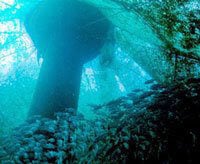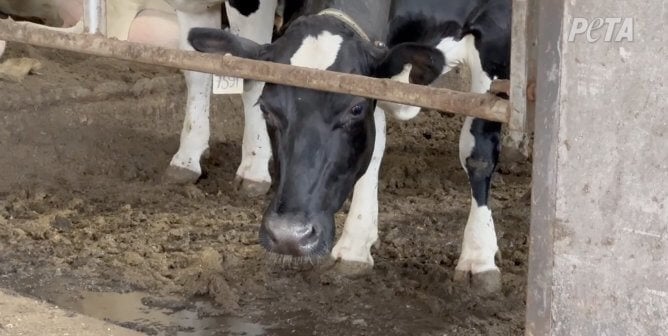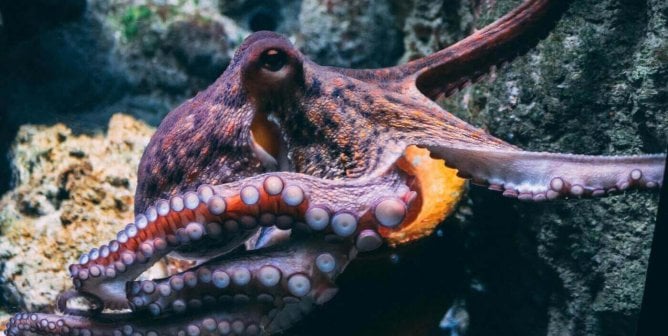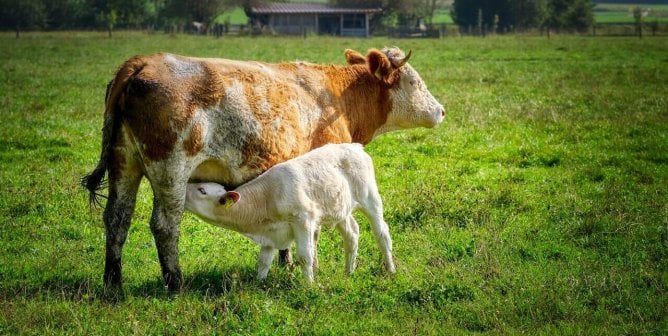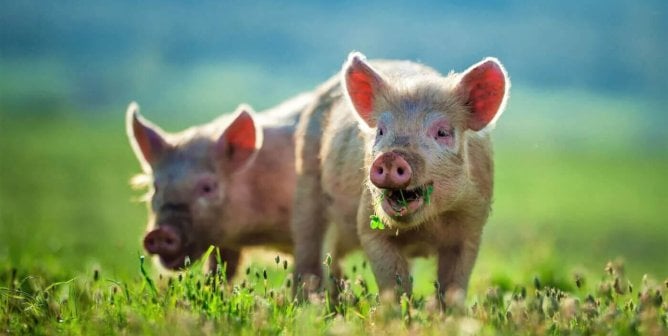Aquafarming
Nearly half of all fish consumed worldwide each year are raised on land- or ocean-based aquafarms. Farmed fish spend their entire lives in cramped, filthy enclosures, and many suffer from parasitic infections, diseases, and debilitating injuries.
The Food and Agriculture Organization of the United Nations reports that the aquaculture industry is growing three times faster than land-based animal agriculture, and aquafarms will surely become even more prevalent as our natural fisheries become exhausted.
On aquafarms, high-volume systems control food, light (on indoor farms), and growth stimulation. Genetic engineering is used to accelerate growth, and hormones may be injected into fish to change their reproductive behavior. In some countries, fish farmers also add antibiotics to the fish’s food or water, and residues of these drugs have been found in fish sold for human consumption.
Crowding
Because they’re adapted to navigate vast oceans and use all their senses to do so, fish suffer immensely because of the cramped conditions and lack of space on fish farms. The tight enclosures inhibit their ability to navigate properly and cause them to knock against each other and the sides of the enclosures. This jostling causes sores and damages their fins.
To increase profits, fish farmers cram as many fish as possible into the smallest space possible. Tens of thousands of fish—or more—can be crowded onto a single farm. Large farms can span the size of four football fields and contain more than 1 million fish.
Injuries and Death
In intensively crowded aquafarms, small fish are bullied and killed by larger ones, so fish are continually sorted to make sure that faster-growing individuals are moved to the appropriate size grouping.
At each sorting, the fish are netted or pumped out of their tanks and dumped onto a series of bars and grates with varied space gaps to divide them by size—small fish fall through the small gaps and large fish fall through the large gaps—and redistribute them into different netted cages or tanks. Fish farmers may starve fish for 24 hours or more before sorting them. This practice, called “grading,” is very stressful and results in painful scrapes and a loss of protective scales, leaving fish vulnerable to disease.
High mortality rates, disease, and parasite infestations are common. Deformities and stress-related injuries are also a regular occurrence. On some farms, as many as 40 percent of the fish are blind—a problem that’s not addressed because blind fish net the same profit for farmers. Researchers have also found that half of the world’s farmed fish may suffer from hearing loss.
Fish Feed
Many species of farmed fish are carnivorous, which means that additional fish must be caught from our already-exhausted oceans in order to feed them. It can take 1 pound or more of fish from the ocean to produce 1 pound of farmed salmon or sea bass. Aquafarmers have even begun to feed fish oil and fish meal to fish who naturally eat only plants in an effort to make them grow faster. The aquaculture industry uses up nearly 70 percent of the global supply of fish meal and nearly 90 percent of the global supply of fish oil.
What’s more, fish farmers lace fish feed with powerful chemicals and antibiotics to help fish survive the deadly diseases caused by severe crowding and filth. It’s likely that these fish pellets are the cause of the higher PCB and dioxin contamination levels found in farmed fish, which are seven times higher than the already-dangerous levels found in their wild counterparts.
Contaminant Stew
Contaminants from ocean-based aquafarms, such as fish excrement, uneaten chemical-laden food, and swarms of parasites, spread to the surrounding ocean, and the rampant disease inside the enclosures is passed on to free-swimming fish in the area—even threatening some populations of wild salmon to the point of extinction.
Sea lice, for example, eat at the fish, causing their scales to fall off and creating large sores. In severely crowded conditions, these parasites often eat down to the bone on fish’s faces, resulting in what is sometimes called a “death crown.”
Fish Slaughter: Unregulated Suffering
In the United States, there are no regulations to ensure the humane treatment of fish. Nearly 40 percent of farmed fish die before the aquafarm operator is ready to slaughter them. Fish who survive are starved before they’re sent to slaughter in order to reduce waste contamination of the water during transport. Salmon, for example, are starved for up to 10 days.
Many traditional methods of slaughtering fish are, according to one researcher, “totally unsatisfactory from an animal welfare point of view.” These methods include suffocating fish either in the air or on ice, leaving them to endure pain and terror for 10 minutes or more before finally dying; piercing their hearts or severing their gill arches without prior stunning; and chilling the water temperature—which immobilizes fish but may leave them fully conscious—before killing them with carbon dioxide.
Take PETA’s pledge to go vegan for 30 days and try removing fish and other animal-based foods from your plate. After just a month, many people report feeling healthier and more energetic. And most importantly, you’ll be saving animals from cruelty.

